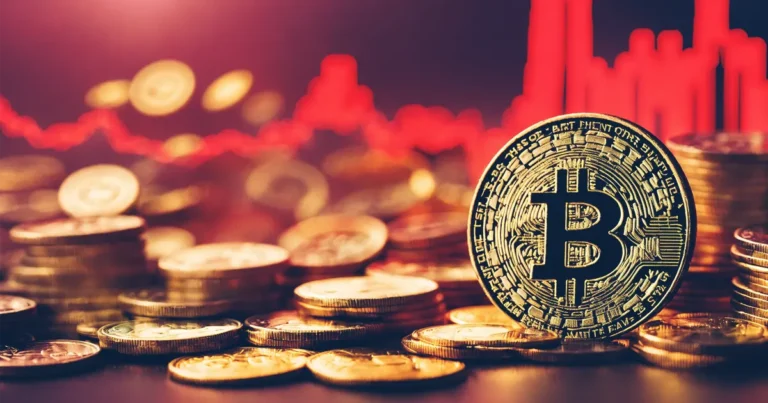7-3-2025 – The cryptocurrency landscape has shifted dramatically with President Trump’s March 6th executive order establishing a U.S. Strategic Bitcoin Reserve. This development adds a new dimension to the Bitcoin investment question, especially as the cryptocurrency remains 20% below its January 2025 all-time high of $109,000.
President Trump’s executive order creates a Strategic Bitcoin Reserve funded exclusively with cryptocurrencies seized in criminal and civil forfeiture cases. White House Crypto and AI Czar David Sacks emphasized that taxpayers will bear no financial burden for this initiative, while noting that the U.S. government already controls an estimated 200,000 Bitcoin worth approximately $16.8 billion at current prices.
“This executive order represents a fundamental shift in how the U.S. government views Bitcoin,” says cryptocurrency economist Maria Hernandez. “By prohibiting the sale of Bitcoin from this reserve and positioning it as a permanent store of value, the administration is effectively endorsing Bitcoin’s long-term viability.”
The announcement has already influenced market sentiment. Nic Carter of Castle Island Ventures told CNBC that the U.S. commitment to a Bitcoin-only reserve “ratifies Bitcoin as a global asset of consequence, somewhere in the realm of gold.”
This governmental validation addresses one of the persistent concerns about cryptocurrency investments—regulatory uncertainty. The executive order not only establishes a Bitcoin reserve but also creates a U.S. Digital Asset Stockpile managed by the Treasury Department for other confiscated cryptocurrencies, creating a clear distinction between Bitcoin and other digital assets.
While the Bitcoin reserve announcement creates positive momentum, investors should not ignore the economic headwinds that initially drove Bitcoin’s 20% pullback from its peak. The Trump administration’s proposed tariffs—25% on products from Canada, Mexico, and the European Union, plus 10% on Canadian energy products—could still trigger inflation concerns.
“The relationship between tariffs and cryptocurrency prices is complex,” explains Dr. Jason Wong, monetary policy expert. “If these tariffs lead to higher inflation, the Federal Reserve might pause interest rate cuts or even reverse course. Higher interest rates historically correlate with downward pressure on speculative assets like cryptocurrencies.”
For investors considering Bitcoin in this evolving environment, several approaches merit consideration:
Strategic accumulation: The establishment of a government Bitcoin reserve suggests long-term governmental confidence in the asset. For those sharing this view, dollar-cost averaging—regularly purchasing smaller amounts regardless of price fluctuations—may help manage volatility while building a position.
Wait for tariff clarity: Despite the positive signal from the Bitcoin reserve announcement, tariff implementation details and their economic impact remain uncertain. More cautious investors might wait for greater clarity on how these policies will affect inflation and interest rates.
Portfolio allocation reconsideration: The government’s Bitcoin endorsement might justify revisiting your cryptocurrency allocation. Financial planners generally recommend limiting crypto exposure to 1-5% of an investment portfolio, but individual circumstances vary.
Ryan Gilbert, a fintech investor quoted in CNBC’s coverage, suggests the move will encourage institutional adoption by signaling that “Bitcoin is here to stay.” This governmental validation could accelerate the trend of institutional investment that began with the approval of spot Bitcoin ETFs in January 2024.
“What institutions crave above all is certainty,” notes wealth manager Thomas Carson. “The establishment of a Strategic Bitcoin Reserve provides a level of certainty that didn’t exist before. It suggests that, at minimum, Bitcoin won’t face existential regulatory threats in the United States.”
While Bitcoin’s price remains 20% below its record high, focusing exclusively on near-term price movements misses the significance of recent developments. The creation of a Strategic Bitcoin Reserve represents institutional validation at the highest governmental level.
“This is about more than current pricing,” explains cryptocurrency researcher Sophia Martinez. “The U.S. government is now effectively a Bitcoin hodler with a mandated no-sell policy. That’s a fundamental shift in Bitcoin’s institutional acceptance that transcends day-to-day price fluctuations.”
For investors considering Bitcoin, the decision landscape has evolved significantly. The establishment of a Strategic Bitcoin Reserve addresses some core concerns about regulatory risk while potentially setting the stage for broader institutional adoption.
That said, macroeconomic uncertainties—particularly around tariffs and inflation—haven’t disappeared. These factors could still drive near-term volatility regardless of the positive signal from the government’s Bitcoin reserve.
The most prudent approach remains investing only what you can afford to lose while maintaining a long-term perspective. Bitcoin’s recent pullback, now contextualized by unprecedented governmental validation, may indeed represent an opportunity for those with sufficient risk tolerance and time horizon.


